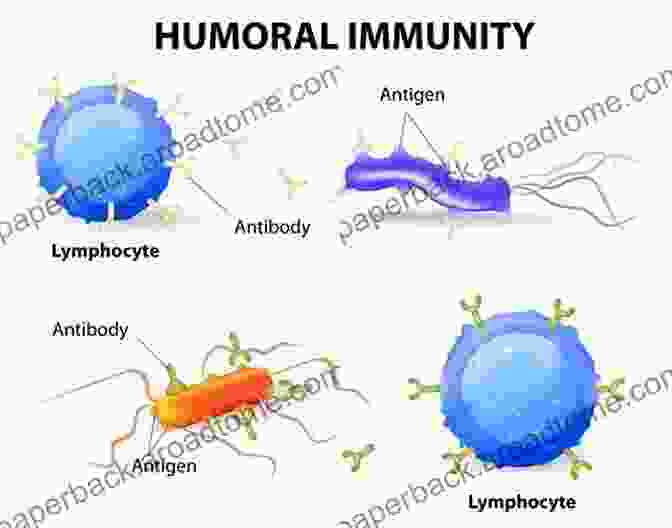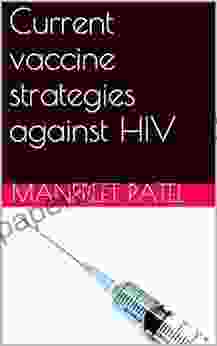Current Vaccine Strategies Against HIV: A Comprehensive Guide

The human immunodeficiency virus (HIV) continues to pose a significant global health challenge, with an estimated 38 million people currently living with the infection worldwide. Despite significant advances in antiretroviral therapy, which can effectively suppress the virus and prevent disease progression, a cure or preventive vaccine remains elusive.
5 out of 5
| Language | : | English |
| File size | : | 349 KB |
| Text-to-Speech | : | Enabled |
| Screen Reader | : | Supported |
| Enhanced typesetting | : | Enabled |
| Print length | : | 9 pages |
Vaccine development against HIV has proven particularly challenging due to the virus's high mutation rate and ability to evade the immune system. However, recent years have witnessed significant progress in the field, with several promising vaccine candidates currently in clinical trials.
Challenges in HIV Vaccine Development
Developing a vaccine against HIV is complex and faces numerous challenges:
- High mutation rate: HIV has a high mutation rate, which means that it can rapidly evolve and escape the immune response. This makes it difficult to design a vaccine that can target all strains of the virus.
- Immune evasion: HIV has evolved mechanisms to evade the immune system, making it difficult for the body to mount an effective immune response. These mechanisms include:
- Downregulating the expression of viral proteins on the surface of infected cells
- Producing proteins that interfere with the function of the immune system
- Establishing a latent reservoir of infected cells that are not targeted by the immune system
- Lack of sterilizing immunity: Most vaccines aim to induce sterilizing immunity, which completely prevents infection with a pathogen. However, it is unlikely that a vaccine against HIV will be able to achieve sterilizing immunity, given the virus's ability to evade the immune system.
Current Vaccine Strategies
Despite these challenges, several vaccine strategies against HIV are currently being investigated in clinical trials. These include:
Envelope-Based Vaccines
Envelope-based vaccines target the viral envelope, which is the outermost layer of HIV. This layer contains glycoproteins (gp120 and gp41) that are responsible for binding to host cells and initiating infection. Envelope-based vaccines aim to induce antibodies that can neutralize these glycoproteins and prevent the virus from entering cells.

Live Attenuated Vaccines
Live attenuated vaccines contain a weakened or modified form of the virus. When administered, these vaccines stimulate the immune system to produce an immune response without causing disease. However, live attenuated vaccines for HIV pose safety concerns, as there is a risk of the virus reverting to its virulent form.

Viral Vector Vaccines
Viral vector vaccines use a harmless virus as a vector to deliver HIV antigens to the immune system. The vector virus is genetically engineered to express HIV proteins, which can then stimulate the immune response. Viral vector vaccines have shown promise in preclinical studies, but their safety and efficacy in humans need to be further evaluated.

Cell-Mediated Immunity Vaccines
Cell-mediated immunity vaccines aim to induce a cellular immune response against HIV. This type of immune response involves the activation of cytotoxic T cells, which can kill infected cells. Cell-mediated immunity vaccines are based on the concept that HIV-specific T cells can control viral replication and prevent disease progression.

Clinical Trial Results
Several HIV vaccine candidates have shown promising results in clinical trials. For example, the RV144 vaccine trial, conducted in Thailand, demonstrated a modest level of protection against HIV infection. The vaccine, which used a combination of an envelope-based vaccine and a live attenuated vaccine, was found to reduce the risk of HIV infection by 31%.
Other vaccine candidates, such as the HVTN 702 trial and the Mosaico trial, have not shown significant efficacy in preventing HIV infection. However, these trials have provided valuable insights into the challenges of HIV vaccine development and have helped to refine vaccine design strategies.
The development of an effective HIV vaccine remains a top priority for global health. While significant challenges remain, recent advances in vaccine research have renewed hope for finding a solution to this devastating pandemic. Ongoing clinical trials are evaluating a range of vaccine strategies, and it is anticipated that new and improved vaccine candidates will emerge in the coming years.
The development and deployment of an effective HIV vaccine would have a profound impact on global health. It would prevent new HIV infections, reduce the burden of disease, and ultimately save millions of lives.
5 out of 5
| Language | : | English |
| File size | : | 349 KB |
| Text-to-Speech | : | Enabled |
| Screen Reader | : | Supported |
| Enhanced typesetting | : | Enabled |
| Print length | : | 9 pages |
Do you want to contribute by writing guest posts on this blog?
Please contact us and send us a resume of previous articles that you have written.
Light bulbAdvertise smarter! Our strategic ad space ensures maximum exposure. Reserve your spot today!
 Jack PowellArtists, Celebrities, Activists, Educators, and Other Icons in the Sunshine...
Jack PowellArtists, Celebrities, Activists, Educators, and Other Icons in the Sunshine...
 Reed MitchellEscape into the Enchanting Realm of "The Forever Haze of After": A Literary...
Reed MitchellEscape into the Enchanting Realm of "The Forever Haze of After": A Literary...
 Jett PowellDiscover the Profound Wisdom and Inspirational Teachings in 'Selected Sermons...
Jett PowellDiscover the Profound Wisdom and Inspirational Teachings in 'Selected Sermons... Eddie BellFollow ·5.2k
Eddie BellFollow ·5.2k H.G. WellsFollow ·7.3k
H.G. WellsFollow ·7.3k Stephen KingFollow ·12.6k
Stephen KingFollow ·12.6k Miguel de CervantesFollow ·15.8k
Miguel de CervantesFollow ·15.8k Gene PowellFollow ·15.9k
Gene PowellFollow ·15.9k Guillermo BlairFollow ·5.7k
Guillermo BlairFollow ·5.7k Oliver FosterFollow ·14.6k
Oliver FosterFollow ·14.6k Fernando PessoaFollow ·10.1k
Fernando PessoaFollow ·10.1k

 Isaiah Powell
Isaiah PowellWisconsin Clinic Pilots Mobile Crisis Response System For...
MADISON, Wis. - A new mobile crisis...

 Daniel Knight
Daniel KnightUnleash Your Creativity: A Masterclass in Fabulous Nail...
Embellish Your Fingertips with Captivating...

 Clark Campbell
Clark CampbellDetect When You Are Being Emotionally Manipulated By...
Emotional manipulation is a subtle but...

 Eli Brooks
Eli BrooksNeurological Disorders Papers: Dissociative Identity...
What is Dissociative...

 Ricky Bell
Ricky BellAn Introduction to Islam for Jews: Unveiling the Tapestry...
A Bridge of Understanding: Exploring Islam for...

 Octavio Paz
Octavio PazAchieving Longevity: The Complete Step-by-Step Guide to...
**** In the ever-evolving landscape of health...
5 out of 5
| Language | : | English |
| File size | : | 349 KB |
| Text-to-Speech | : | Enabled |
| Screen Reader | : | Supported |
| Enhanced typesetting | : | Enabled |
| Print length | : | 9 pages |












































